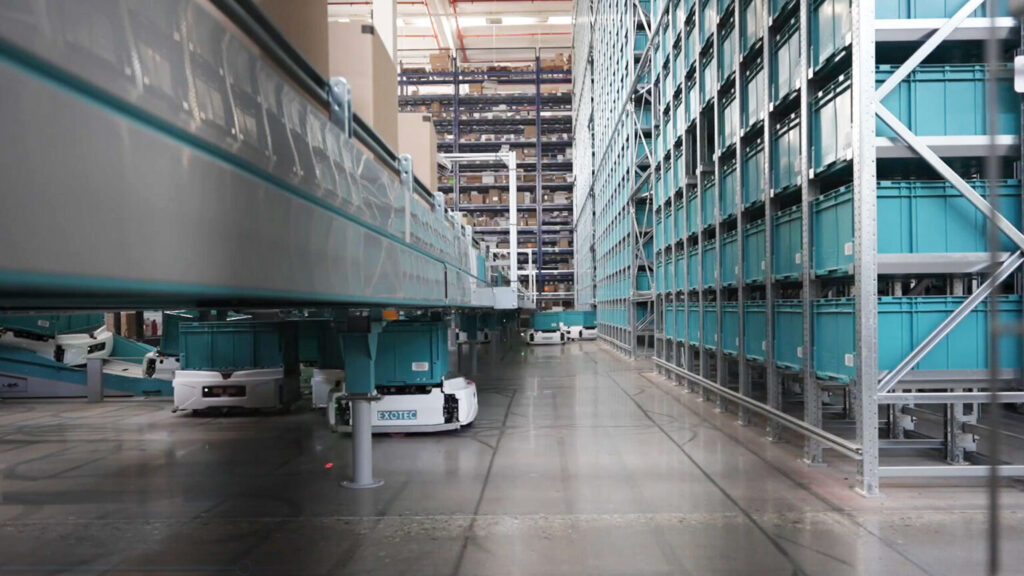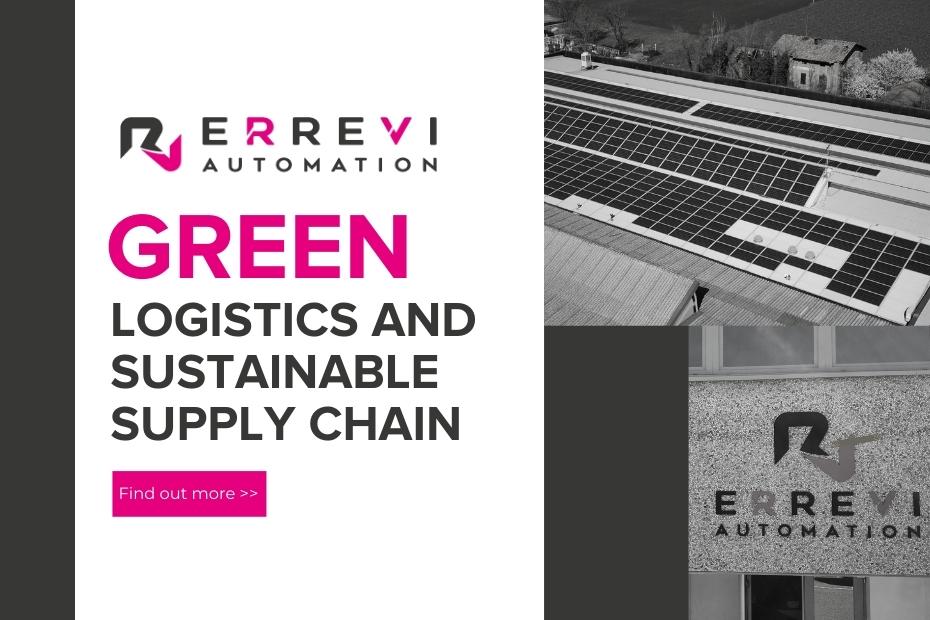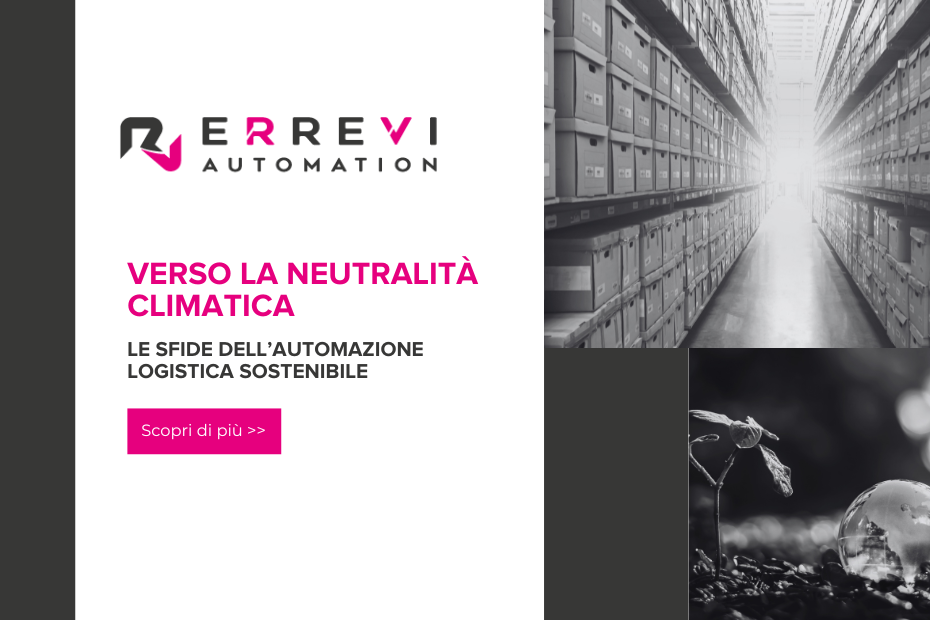Contatti:
+39 0536 284111
Indirizzo:
Via Giovanna Maria Dallari, 2 - 41049 Sassuolo (MO) Italy

Replacing classic lighting systems with LED lights can reduce energy consumption by up to 80 per cent. LEDs last longer and require less maintenance than conventional lights. Installing motion sensors for lighting in little-used areas ensures that lights are only switched on when needed, further reducing energy consumption.
Using reusable or biodegradable packaging can significantly reduce the waste generated. Working with suppliers to optimise packaging sizes can further reduce waste. Errevi is for example system integrator of the French company Exotec which recently introduced bins made from recycled plastic. The first batch of bins distributed in 2023 resulted in a significant reduction of 3801 tonnes of CO2 emissions and 2930 tonnes of virgin plastic.

Install solar panels on the roof of the warehouse can provide a source of renewable energyreducing dependence on fossil energy sources. Moreover, opting for energy suppliers that offer electricity from renewable sources such as wind, solar or hydropower is a more responsible choice.
The implementation of a warehouse software as the WMS can improve operational efficiency, reduce errors and optimise stock management by reducing waste.

Automated Guided Vehicles (AGVs): Using rechargeable battery-powered AGVs for inland freight transport can reduce CO2 emissions, improve efficiency and contribute to better sustainable logistics.
The ‘Navilog’ model AGV (Automated Guided Vehicles) shuttles, for example, designed and totally manufactured in-house by ERREVI, were created to optimise various goods handling processes with the adoption of certain measures dictated by principles of social and environmental responsibility. Navilog AGVs are induction-powered. Within logistics or production centres, the installation of 100% induction-powered shuttles offers a twofold advantage for customers: on the one hand, there are no problems of environmental pollution or battery disposal; on the other hand, the use of clean electricity, e.g. from photovoltaic systems, can turn into a competitive advantage for the company.

Improving building insulation can reduce heating and cooling costs while maintaining a stable indoor temperature. Designing the warehouse with natural ventilation systems can reduce the need for air conditioning and improve indoor air quality, another important factor for the green logistics.
Educate employees on sustainable practices and how they can help reduce the environmental impact of the warehouse, incentivise employees to come up with ideas and solutions to improve the warehouse sustainability and develop a sensitivity towards a logistics increasingly logistic solutions. are just a few examples of how to convey the importance of these issues to operators.
Read more about similar topics on our Blog:

Efficient logistics, and therefore an automated warehouse, can make the difference between success and failure. A good logistics system must be able to… Read more>>>

At the end of July 2021, the European Union passed a climate law that ‘establishes the binding goal of climate neutrality’ for member states, setting up a… REad more>>>
The transition to a sustainable warehouse requires continuous commitment and a long-term vision. Implementing these strategies can not only help protect the environment, but also improve operational efficiency and reduce costs. A sustainable warehouse is a competitive advantage for the company, meeting growing customer expectations and contributing to the creation of a greener future.
Implementing these practices will not only bring environmental benefits, but can also improve corporate reputation, attract new customers and meet increasingly stringent environmental regulations for a green logistics. Sustainability is the future of logistics: today begins the journey towards a greener warehouse!

